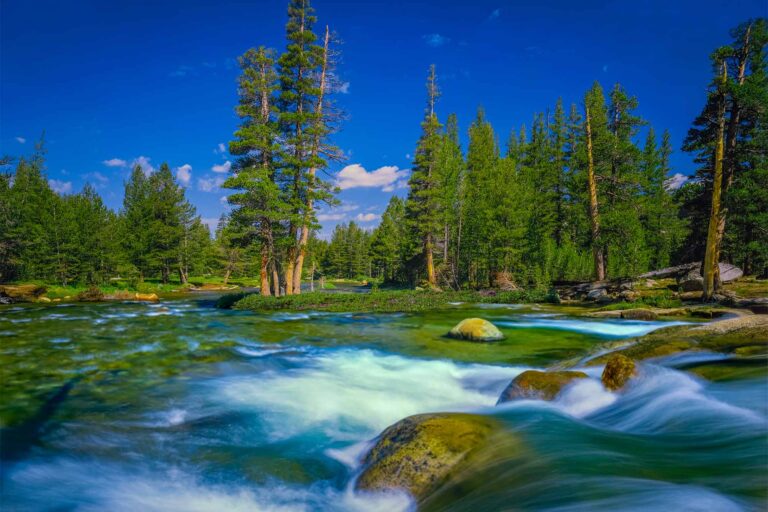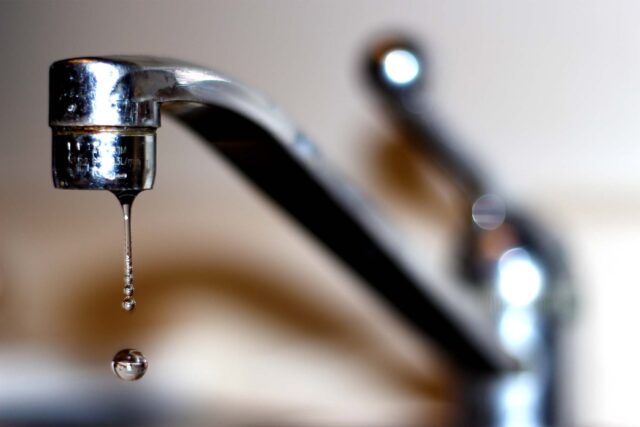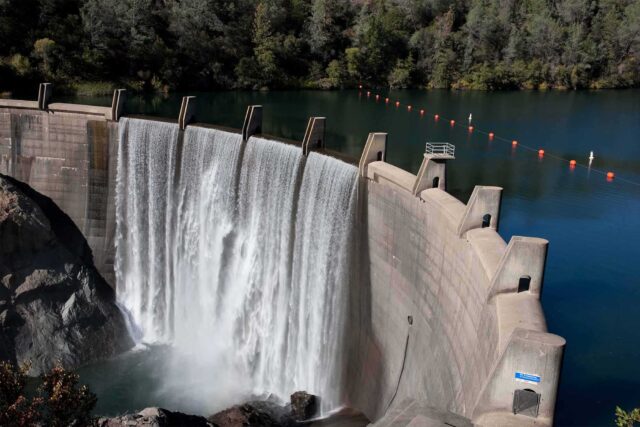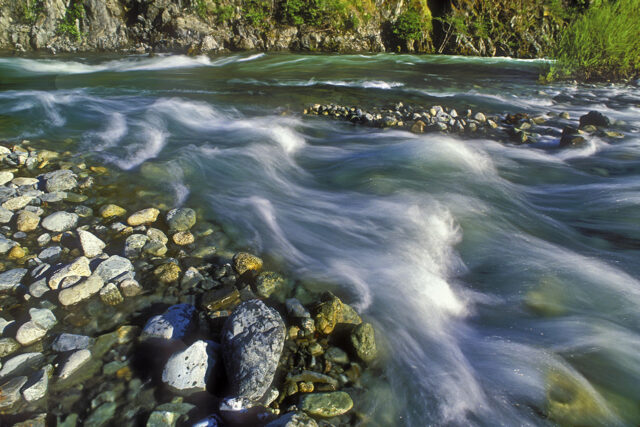Water that stays in rivers, streams, and wetlands is considered “environmental water.”
- The state’s rivers, lakes, wetlands, and estuaries support rich biodiversity, but decades of habitat loss, reduced flows, and pollution have taken their toll.
- On average, 50% of the state’s water goes to the environment. State accounting assigns water to the environment if it remains in ecosystems rather going to other uses like irrigation, industry, or drinking water.
- Environmental water use falls under four categories: protected wild and scenic rivers (63%); instream ecosystem use (18%); water quality maintenance for agriculture and cities (15%); and wetlands within wildlife preserves (4%).
Environmental water benefits all Californians—not just ecosystems.
- Environmental water supports habitat for fish and wildlife and maintains water quality for human uses such as recreation, drinking water, and irrigation. Some water for habitat also gets used downstream by agriculture, cities, and other sectors.
- Although most environmental water is not in direct competition with other uses, a growing amount goes toward protecting endangered species. This can reduce water available for other purposes.
Environmental water use is highest in northern California, and in wet years
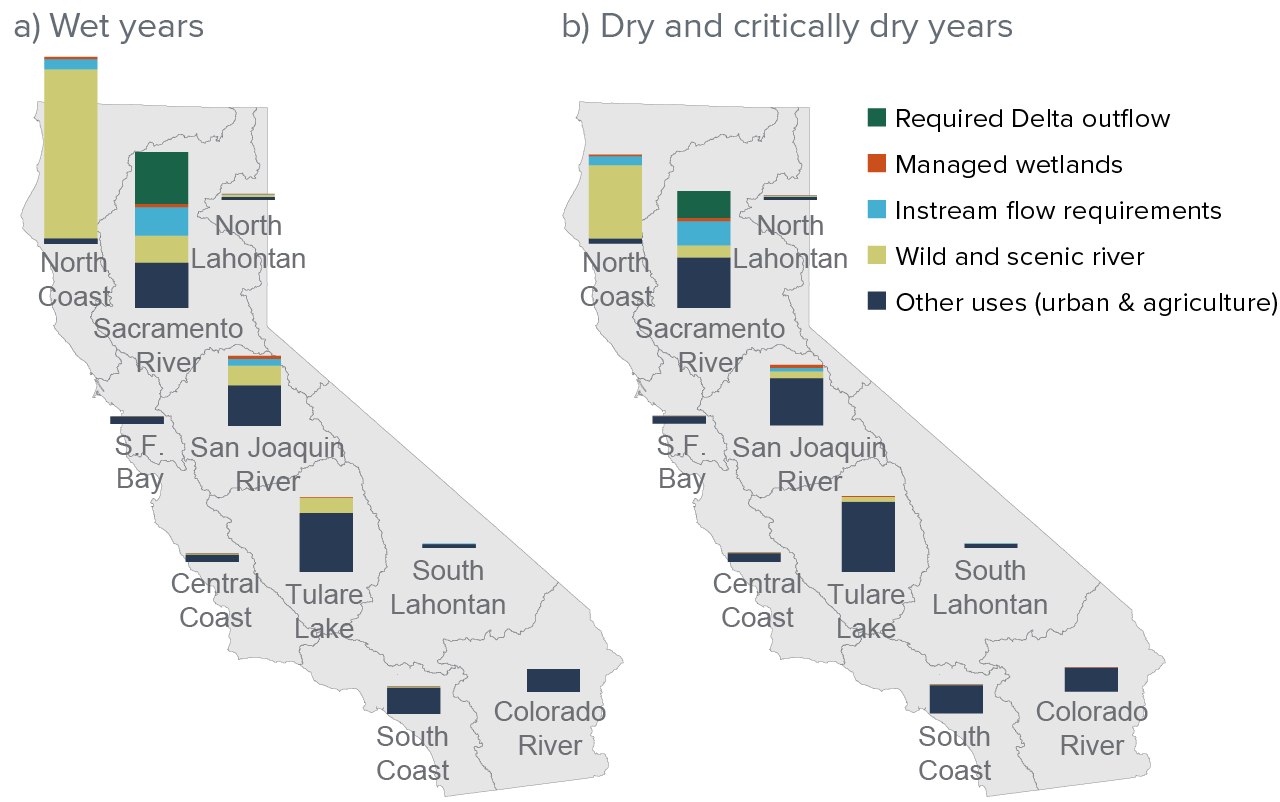
SOURCE: Department of Water Resources.
NOTES: Averages are for annual applied water use from 1998–2018. Data for 2017 were not available.
A large share of California’s environmental water use occurs in northern rivers.
- The environment’s share of water use varies dramatically by region. On average, half of the state’s environmental water use occurs in the sparsely populated North Coast, mostly for flows down protected wild and scenic rivers.
- Outside of the North Coast, another 36% of environmental water use occurs in the relatively wet Sacramento Valley. The San Joaquin Valley accounts for 12% of environmental water use, and less than 2% occurs in the rest of the state.
- On average, 38% of the water flowing out of the Sacramento–San Joaquin Delta goes to the environment. By PPIC’s accounting, only one-third of that water—and even less in dry years—is used to protect fish and wildlife; the rest keeps the Delta fresh enough for use by cities and farms.
In the Sacramento–San Joaquin Delta, environmental water declines dramatically during dry years
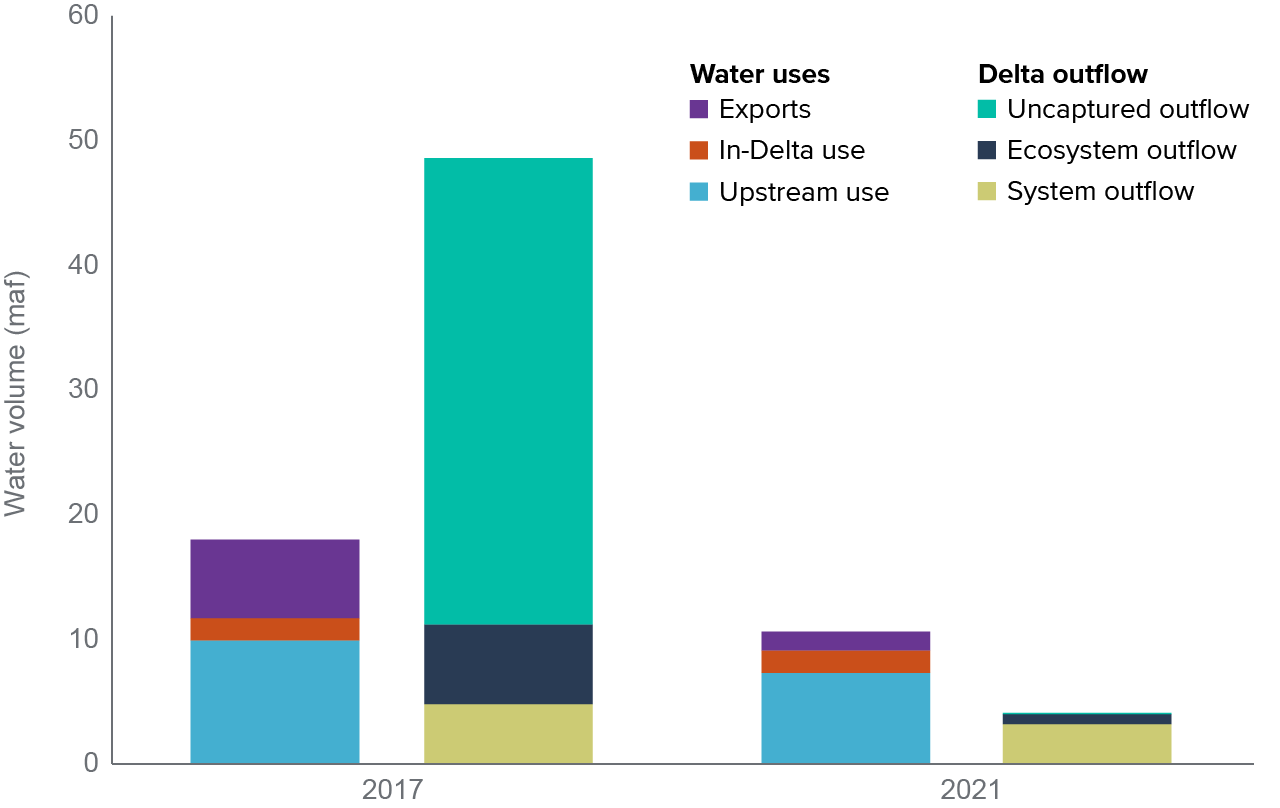
SOURCE: PPIC Delta Water Accounting spreadsheets.
NOTES: “Maf” is millions of acre-feet. Delta watershed flows are shown for water years (October 1 through September 30). System outflow is water required to maintain water quality. Ecosystem outflow is additional water to meet environmental regulations. Uncaptured outflow results from inflow that exceeds systems and ecosystem outflow needs. For details on water uses, see Gartrell et al. Tracking Where Water Goes in a Changing Sacramento–San Joaquin Delta (PPIC 2022).
In dry years, the share of water for the environment falls sharply.
- In wet years, environmental water makes up a larger proportion of available water (61%) than in dry years (41%). During droughts, wild and scenic river flows are much lower. Required Delta outflows for salinity control and fish protection are also reduced, allowing a greater share of water for cities and farms.
- Drought can be debilitating to species and ecosystems, and recovery is unlikely without successive good years. California’s freshwater habitats and species remain at grave risk given recent extraordinarily dry conditions.
Environmental water accounting and management need improvement.
- Increasing drought intensity and declining ecosystem health make it imperative to improve tracking of environmental water use—and its multiple benefits.
- New approaches can make more effective and efficient use of environmental water. Allocating a portion of supplies to the environment—rather than managing for restrictive minimum flow requirements—will help improve freshwater systems’ health.
- Other strategies include purchasing more water for the environment, improving the timing of water releases to maximize ecosystem benefits, and better connecting environmental water to physical habitat such as floodplains.
Topics
Drought Freshwater Ecosystems Water Supply Water, Land & Air

